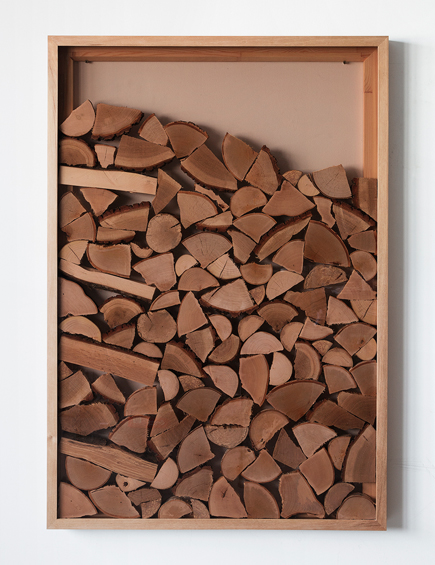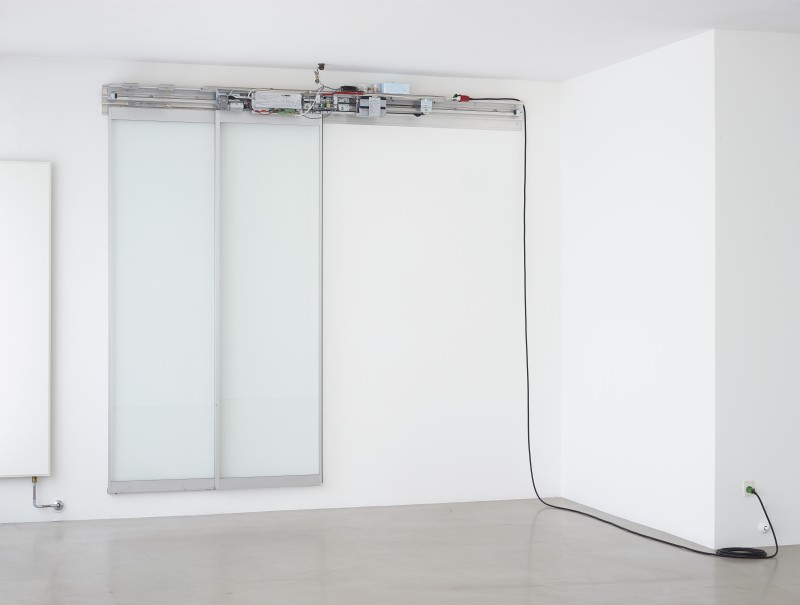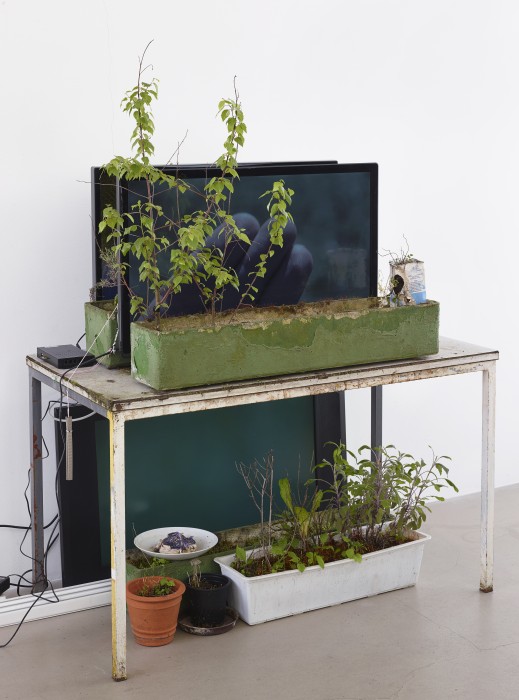Hans Christian Lotz, Untitled, 2016, Die Ölmühle aus Bickelsberg im Freilichtmuseum Vogtsbauernhof Gutach, 2015 and Untitled, 2015
In one famous scene in Jacques Tati’s 1958 film Mon Oncle, Tati’s character Monsieur Hulot tries to open the kitchen cabinet in his brother-in-law’s hyper modern suburban home. He pulls repeatedly on the cabinet’s handle, but cannot open it. He accidentally tricks some switch and the doors fly open without warning, comically spilling their contents onto the floor. All throughout the house the doors are automatic; the garage door operates with a mind of its own, the doors to the veranda slide open and closed randomly, and Tati even manages to break the gate to the house as he attempts to use it like the “manual” doors of his apartment in the city.
In the main room of Hans-Christian Lotz’s untitled exhibition at David Lewis Gallery, three sets of glass automatic doors, the kinds characteristic of convenience stores or supermarkets, are mounted to the walls, opening and closing as you walk around the room. The doors, in parts smashed and with their operating mechanisms visible to the eye, at first appear like debris removed from the aftermath of a vicious riot in some European suburb—a much more extreme reaction to the superfluous upper-middle-class posturing that was the subject of Mon Oncle’s satire. But upon closer inspection, the mechanical objects betray that they too are in on the joke. Titled with absurdly long untranslated names of German water-powered mills like “Die Ölmühle aus Bickelsberg im Freilichtmuseum Vogtsbauernhof Gutach” (2014), the pieces are acutely aware of the anxieties of Monsieur Hulot’s trip to suburbia—except, of course, in the past 60 years the automatic door has shifted from a middle-brow extravagance to an immanent, and banal, symbol of commerce. Furthermore, Lotz’s version of Hulot’s trip from the city is not straight to suburbia, but also adds a stop in the bucolic German countryside.
Underscoring this, one set of doors has a folksy flute embedded in its mechanism, while another has a cast facsimile of the flute. These objects, their copies, and the titles of the sculptures (names of mills) all refer to a history of industrial production set between two poles of city and country, and harken back to the pastoral ideals of the German Romantics, where technological advance stood in profane contrast to the ageless magnificence of the countryside. In Lotz’s hands, the sliding automatic doors augur a philosophical collapse of property enabled by technology; emblems of the city, country, and suburb collide into a vague and threatening territory guided purely by economics, existing everywhere and nowhere. His Germanic references fit the works’ intellectual prescriptions.
Walking around the space, your movements triggering the sensors that open and close the pieces, is a disconcerting experience with a lingering air of menace that Tati would have appreciated. It doesn’t feel quite like a gallery, and as the movement of the doors traces your path through the space, you can’t help but be aware of the fact that the work is staring back at you. Of course, for the moment, there is an important difference between a surveillance camera and an electric eye—only one keeps a record.
Source: Artforum.
Text: Alexander Shulan, The Brooklyn Rail.
All images belongs to the respective artist and management.


